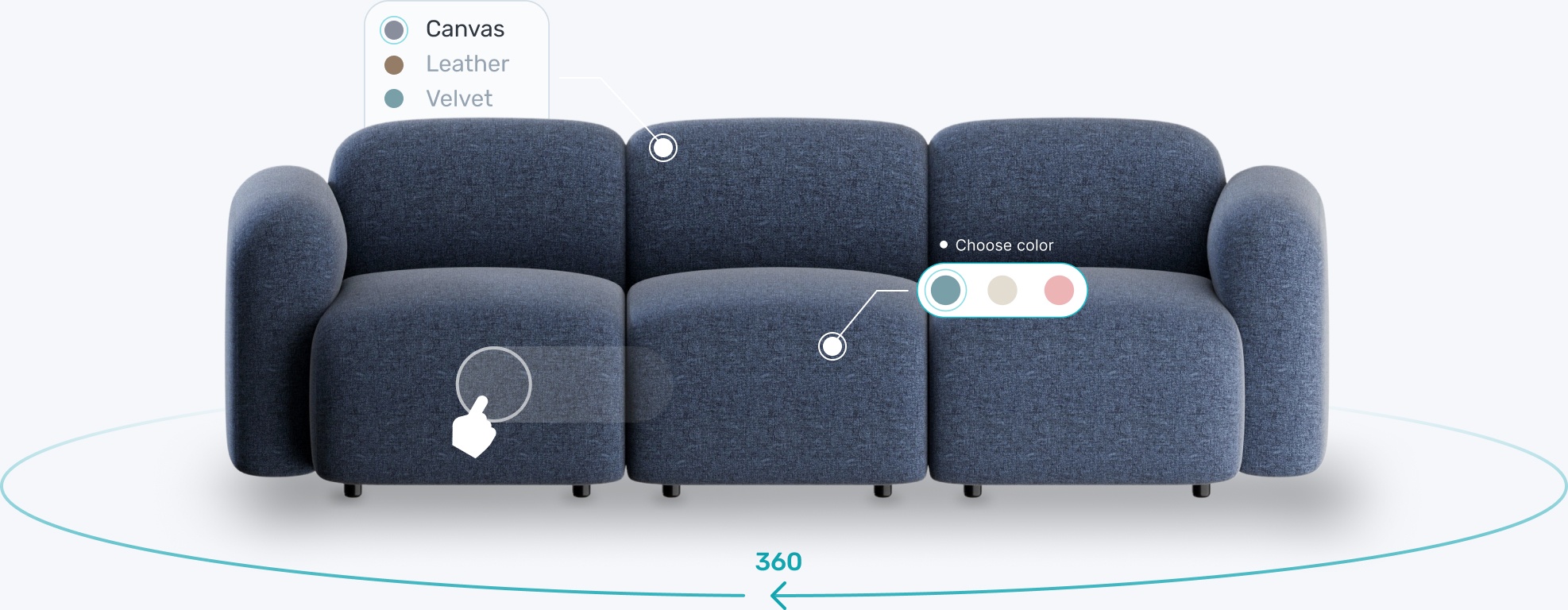Transform your eCommerce strategy with 3D & AR




3D modeling is the process of creating 3D models - digital representations of an object, real or imagined - from 2D images.
Every 3D model is made from a large number of 2D shapes, which we refer to as polygons. There are two main types of 3D models: high-poly and low-poly (see below for more FAQs on these types).
You can make a 3D model yourself using any 3D software of your choice. Or commission one from CGTrader’s network of 3D designers. To learn more about making 3D models, read our guide to 3D model creation.
Virtual photography is a common phrase for the production of 3D renders: 100% digital and photorealistic product images. Create hundreds of product images from a single 3D model to see your product from any angle or place into any setting. All that’s required is the 3D model - eliminating the need for expensive photographers, photoshoots or cameras. Read more.
3D rendering is the process of placing a 3D image into a real or imagined scene to create a new 2D image. For example, when a 3D model of an item like a sofa is placed within a living room, or it could be something more creative, like putting a sofa on the moon.
High-poly and low-poly refers to the polygon count of the 3D model - just like how we have low and high resolution images in 2D.
A high-poly model will be “heavier” and larger to store, like the file size of a PDF or Jpeg, and not suited for real-time uses such as gaming. While low-poly models are “lighter” and therefore easier to store, process, and interact with.
Each type has different advantages and disadvantages that make them a better choice for different use cases. Read more in our blog.
PROS:
CONS:
PROS:
CONS:
Low-poly 3D models are chosen for interactive environments to ensure processing power and visual richness. There are two main use cases: 3D viewer and augmented reality (AR).
3D viewer: Zoom, flip, and spin any product to get a better look from any angle.
AR: Place an item in your chosen environment. For example, to visualize trying a product on or to see how a product fits and looks inside a room.
High-poly 3D models are chosen as a substitute for traditional photography, creating photorealistic representations of objects typically within a lifestyle scene.
We see four main use cases:
1. 3D Product Visualization: Generate high quality photorealistic product visuals in 3D at any scale, significantly faster than traditional photography.
2. Virtual Photography: Turn a single 3D image into a rich product library, where every single aspect from the lighting to the resolution, angle and background can be adjusted.
3. 3D Lifestyle Scenes: Unlock your creativity with photorealistic 3D scene renderings that showcase your product in different settings, styles and interior designs.
4. 360 Viewer: Also known as 360 Rotator, it allows users to interact with your 3D product visuals by rotating the product image 360-degrees on its axis.
Augmented reality (AR) is the ability to place digital elements such as a 3D image of a product onto the user’s physical environment, typically using a smartphone camera or tablet. For example, to see a product in a room or on yourself.
Virtual reality (VR) takes that experience one step further, and usually requires a headset or additional VR hardware for a fully immersive experience. In eCommerce, companies are now using VR to create unique virtual showrooms and shopping experiences.



